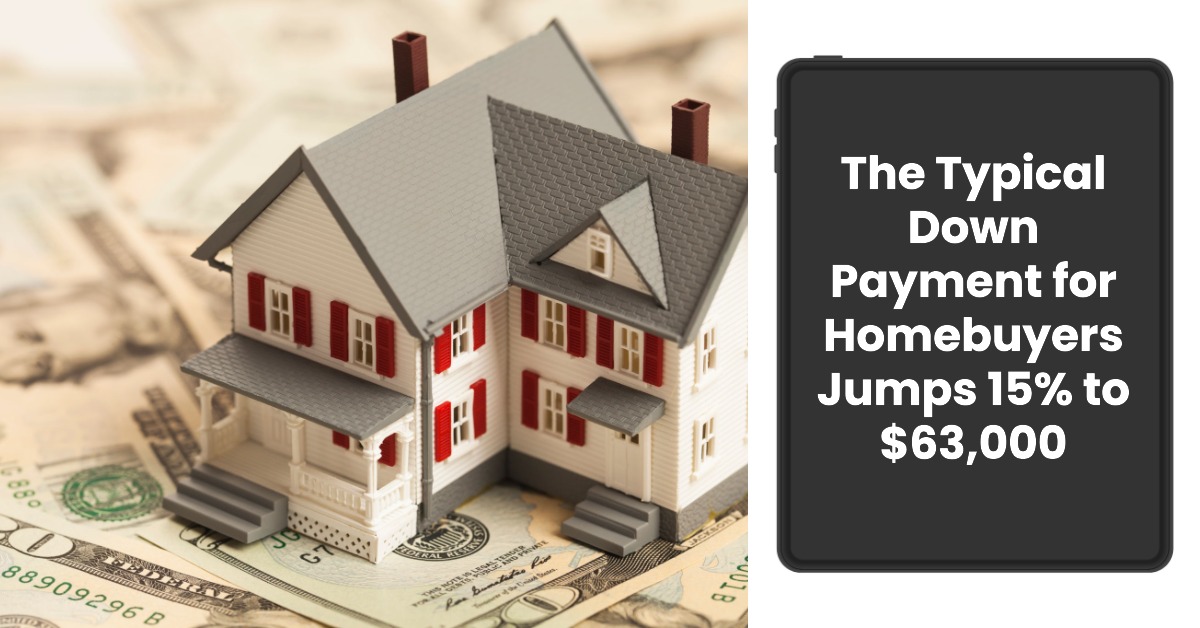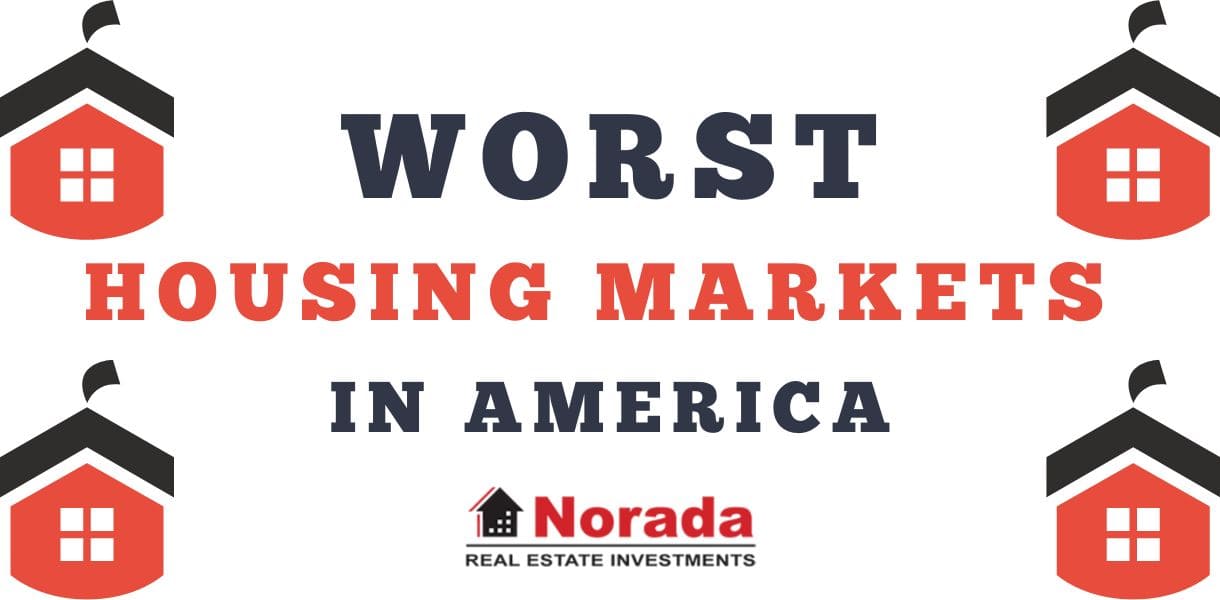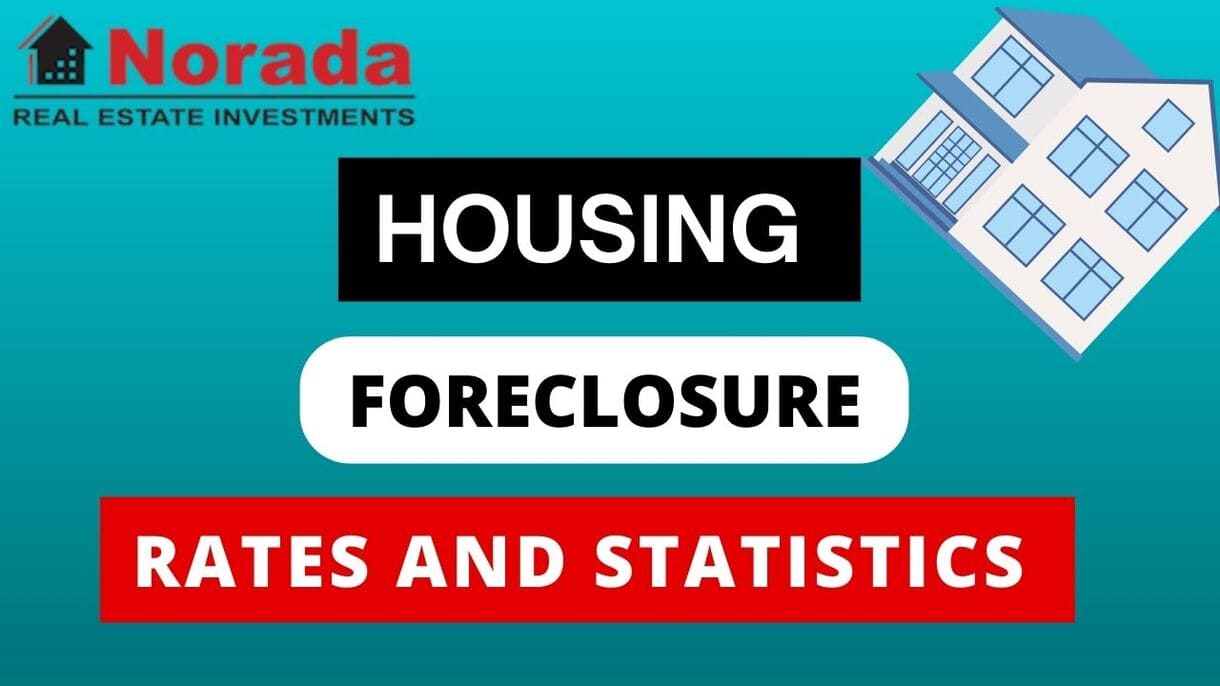Dreaming of owning a home? It's a big goal, and one of the first questions that pops into your head is probably, “How much do I need to save for a down payment?” Well, according to recent data, across the U.S., the typical down payment for homebuyers is now 16% of the home’s price. Yes, you read that right – 16%.
That's up from 15% just a year ago, according to a Redfin analysis of county records from 40 of the most populated metro areas in the U.S. (December 2024 data). In real money terms, we're talking about a median down payment of roughly $63,000. That’s a significant chunk of change, and it's important to understand why this number is what it is, and what it means for you if you’re thinking about buying a home.
Housing Market: The Typical Buyer’s Down Payment Is 16% of the Home’s Price
So, why are homebuyers typically putting down 16% right now? The simplest answer, and frankly, the biggest reason, is that home prices have gone up. Think about it like this: if you're buying something more expensive, even if you put down the same percentage, the actual dollar amount you need is going to be higher. And that’s exactly what’s happening in the housing market.
According to the Redfin report, the median U.S. home sale price increased by 6.3% year-over-year in December 2024, reaching around $428,000. That’s a big jump! So, even if buyers were still aiming for that 15% down payment from last year, the higher prices automatically mean a larger down payment in dollars.
In fact, the typical down payment in dollar terms has gone up by 7.5% compared to the previous year, which is the biggest increase we’ve seen in five months. That $63,188 figure really puts things into perspective – it’s about $4,000 more than what homebuyers were putting down just a year prior.
Think about it from my perspective, having watched the market for years. I've seen firsthand how quickly home prices can change. It’s not just about wanting a bigger house; often, it's simply about keeping pace with the market. As homes become more expensive, the down payment naturally follows suit.
Mortgage Rates: Another Piece of the Puzzle
Rising home prices aren’t the only factor at play. Another major reason why down payment percentages are a bit elevated right now is mortgage rates. We’ve seen rates climb up to around 7% recently, which is significantly higher than what we were used to just a few years ago.
When mortgage rates are high, it makes borrowing money more expensive. This can impact homebuyers in a couple of ways regarding down payments:
- Reducing Monthly Payments: Some buyers are choosing to put down a larger down payment intentionally. Why? To reduce the amount they need to borrow and, in turn, lower their monthly mortgage payments. A bigger down payment means a smaller loan, and a smaller loan means less interest paid over time. In a high-rate environment, this can be a smart strategy to make housing more affordable month-to-month.
- Making Offers More Attractive: While the market isn't as crazy competitive as it was during the peak pandemic buying frenzy, in some areas, a larger down payment can still make your offer look stronger to a seller. It signals that you're a serious buyer with solid financial footing.
From my experience, I've noticed buyers becoming much more strategic with their finances lately. They're running the numbers, looking at different down payment scenarios, and trying to find the sweet spot where they can afford the upfront costs while also managing their monthly payments comfortably. It's a balancing act, and current mortgage rates definitely add another layer of complexity.
Remember the Pandemic Days? Down Payments Then vs. Now
It’s interesting to remember how wildly down payments swung during the pandemic. Before all that craziness, the median down payment was usually around 10%. Then, during the height of the pandemic buying frenzy in 2021, it jumped up to the 15% range. Mortgage rates were also a factor back then, but in a totally different way.
Back then, rates were incredibly low, sometimes even under 3%. This fueled intense bidding wars. To stand out from the crowd and win a home, many buyers started putting down larger down payments. It wasn't necessarily about affordability in the long run; it was more about making their offer the most appealing to sellers in a super competitive market.
Things have changed quite a bit since then. As Sheharyar Bokhari, a senior economist at Redfin, points out, “While a larger down payment can lower monthly mortgage payments and help strengthen an offer in a bidding war, bigger isn’t always better.” He’s right. The housing market in many parts of the country is now leaning more in favor of buyers. This means you, as a buyer, have more negotiating power. You don't necessarily have to empty your savings for a huge down payment to get your offer accepted. It’s becoming more about making smart financial decisions for your situation. Maybe saving some of that money for home renovations or other investments makes more sense right now. It’s all about finding what works best for your long-term financial goals.
Cash is Still King, But Less Dominant
Let’s talk about cash buyers. For a long time, cash was the ultimate power move in the housing market. And while cash purchases are still significant, they're actually becoming less common. According to the Redfin data, about 31% of homes were bought with all cash in December 2024. That’s down from 34% the year before. It might seem like a small drop, but it's a noticeable trend.
Why were cash purchases so popular in the first place, and why are they declining now?
- High Mortgage Rates Drove Cash Purchases: The share of cash buyers actually peaked in 2023. That’s because mortgage rates were at their highest then, hitting nearly 8%, a level we hadn’t seen in two decades. When rates are that high, buyers who can afford to pay in cash are much more likely to do so. Why pay all that interest if you don't have to? It's a way to avoid those hefty monthly payments and save a lot of money on interest over the life of the loan.
- Rates Have Come Down, and So Have Cash Purchases: Since then, mortgage rates have come down a bit and stabilized in the 6-7% range. This slight decrease has made borrowing money a little less painful, and as a result, we're seeing fewer all-cash purchases. Also, investors, who often make up a large portion of cash buyers, have been purchasing fewer homes recently, further contributing to the decline in cash sales.
Looking at the bigger picture, about 32.6% of home sales in 2024 were all-cash, which is the lowest share in the past three years. While cash is still a significant factor, it's clearly not as dominant as it was when mortgage rates were at their peak.
FHA and VA Loans: Helping Buyers Get In the Door
For many homebuyers, especially first-timers or those with moderate incomes, government-backed loans like FHA and VA loans are crucial for making homeownership a reality. Let’s take a look at how these are being used right now.
- FHA Loans: About 15% of mortgaged home sales in December 2024 used an FHA loan. This is slightly down from 15.9% the previous year, but up from a decade-low of around 10% in mid-2022. FHA loans are insured by the Federal Housing Administration and are designed for low-to-moderate-income borrowers. They are especially popular with first-time homebuyers because they have more flexible financial requirements than conventional loans, often requiring a down payment as low as 3.5%.
- VA Loans: The use of VA loans is slightly increasing. In December, about 6.7% of mortgaged home sales used a VA loan, up from 6.2% the year before. VA loans are guaranteed by the Department of Veterans Affairs and are available to veterans, active-duty military personnel, and surviving spouses. One of the biggest advantages of VA loans is that they often require little to no down payment.
Why are we seeing these trends with FHA and VA loans?
- Market Shift Favors FHA Loans: Back in late 2021 and early 2022, when the market was hyper-competitive, buyers using FHA loans sometimes found it harder to get their offers accepted because sellers often preferred buyers with larger down payments and stronger financial profiles. Now that the market is more balanced, sellers are more open to offers using FHA loans.
- Affordability Challenges: With home prices still high, even though they might not be skyrocketing like before, many buyers are finding it challenging to save up for large down payments. This makes FHA loans, with their lower down payment requirements, a more attractive and accessible option for many.
Conventional Loans Still Reign Supreme
Despite the rise in FHA and VA loan usage for some buyers, conventional loans remain the most common type of mortgage. In December 2024, nearly four out of five borrowers (78.4%) used a conventional loan. This is pretty much unchanged from the 77.9% the year before. Conventional loans are mortgages that are not backed by the government, and they typically have stricter requirements for credit scores and down payments. However, for buyers who qualify, they often offer competitive interest rates and terms.
Recommended Read:
Fannie Mae Lowers Housing Market Forecast and Projections for 2025
Housing Market Forecast 2025 by JP Morgan Research
Housing Predictions 2025 by Warren Buffett's Berkshire Hathaway
Metro-Level Deep Dive: Where Down Payments Vary Wildly
Nationwide averages are helpful, but the housing market is incredibly local. Down payment trends can vary significantly from one city to another. Let's zoom in on some of the metro-level data from the Redfin report to see what’s happening in different parts of the country. Remember, this data is from December 2024 and covers 40 of the most populous U.S. metros.
Down Payment Percentages: The High and Low Ends
- Highest Down Payments:
- San Francisco, CA (26.4%): No surprise here! San Francisco consistently tops the list for highest home prices in the nation. A 26.4% down payment there is massive, translating to a median of $375,000! This reflects the extreme cost of housing in the Bay Area. In my opinion, this is driven by a combination of high incomes in the tech industry, limited housing supply, and strong investor activity.
- Anaheim, CA & San Jose, CA (25%): Following closely behind San Francisco, Anaheim and San Jose, also in California, show typical down payments of 25%. These are also incredibly expensive markets driven by similar factors as San Francisco – tech wealth, limited inventory, and high demand. It's clear that California's coastal markets require substantial upfront investment.
- Why So High in California? California’s high down payment percentages are a reflection of sky-high home values. To even get into the market, buyers need to bring a significant amount of cash to the table. This creates a barrier to entry for many, especially first-time homebuyers.
- Lowest Down Payments:
- Virginia Beach, VA (3%): Wow, 3%! That’s incredibly low compared to the national average. The median down payment here is only $10,033. Virginia Beach is a very different market from California. It’s likely that the high prevalence of VA loans in this metro, due to its large military presence, is a major factor in these lower down payments. VA loans often allow for zero down payment, bringing the average down significantly.
- Detroit, MI (6.5%): Detroit also has a very low down payment percentage at 6.5%, with a median of $14,795. Detroit has seen a resurgence, but home prices are still relatively affordable compared to many other major metros. This affordability allows buyers to enter the market with smaller down payments.
- Baltimore, MD (8.5%): Baltimore comes in with an 8.5% down payment, and a median of $28,400. Similar to Detroit, Baltimore's housing market is more accessible in terms of price, which contributes to lower down payment percentages.
Down Payments on the Move: Rising and Falling Metros
Interestingly, down payment percentages fell in 8 of the metros analyzed by Redfin.
- Biggest Declines:
- Portland, OR (-4.6 percentage points to 15.4%): A significant drop in Portland. This could indicate a cooling market in Portland, where buyers are perhaps less willing or able to put down as much as before.
- Orlando, FL (-3 percentage points to 15%): Orlando also saw a notable decrease. Florida has been a hot market, but maybe we're seeing some moderation, leading to less pressure for larger down payments.
- Jacksonville, FL (-2.1 percentage points to 10%): Jacksonville, another Florida metro, also experienced a drop. This could be part of a broader trend in Florida, or specific to these local markets.
- Biggest Increases:
- Charlotte, NC (+4.1 percentage points to 14.1%): Charlotte saw the biggest jump in down payment percentages. This could suggest a heating up of the Charlotte market, with increased competition and potentially rising home prices.
- Minneapolis, MN (+1.4 percentage points to 11.4%): Minneapolis also saw an increase, although smaller than Charlotte's.
- San Francisco, CA (+1.4 percentage points to 26.4%): Even in already high San Francisco, down payments increased further, reinforcing the intense pressure in that market.
FHA and VA Loan Hotspots
- Most Prevalent FHA Loans:
- Riverside, CA (25.4%): Even though California has high down payments overall, Riverside stands out for FHA loan usage. This might indicate a different demographic in Riverside compared to super-wealthy Bay Area metros – perhaps more first-time homebuyers or moderate-income families relying on FHA loans to get into the market in a still-expensive region.
- Providence, RI (25.1%): Providence also shows high FHA loan usage.
- Las Vegas, NV (24.3%): Las Vegas rounds out the top three for FHA loans.
- Least Prevalent FHA Loans: Interestingly, the lowest FHA loan usage is also in California: San Francisco, San Jose, and Anaheim. This further highlights the two-tiered nature of the California market – ultra-high-end areas where FHA loans are less common, and more moderate areas where they are essential.
- VA Loan Strongholds:
- Virginia Beach, VA (39%): Virginia Beach is the absolute leader in VA loan usage, which makes total sense given its massive military presence.
- Jacksonville, FL (16.3%) & Washington, D.C. (14.3%): Jacksonville and D.C., also with significant military or government populations, show high VA loan usage as well.
- Least Prevalent VA Loans: Unsurprisingly, the Bay Area metros – San Jose, San Francisco, and Oakland – have the lowest VA loan usage.
All-Cash Kings and Queens (by Metro)
- Most All-Cash Purchases:
- West Palm Beach, FL (50.4%): Over half of all home purchases in West Palm Beach are cash! Florida in general attracts retirees and second-home buyers who often pay in cash.
- Cleveland, OH (46%): Cleveland is surprisingly high on the cash buyer list. This might be driven by investors taking advantage of relatively affordable properties in the area.
- Jacksonville, FL (39.3%): Jacksonville also sees a high proportion of cash purchases.
- Least All-Cash Purchases:
- Oakland, CA (16.2%), San Jose, CA (17.8%), Seattle, WA (18.8%): These tech-heavy, expensive metros show the lowest rates of all-cash purchases. Even wealthy buyers in these markets might prefer to leverage mortgages, perhaps for investment purposes.
The Takeaway:
So, what does all this mean for you if you're thinking about buying a home? The headline takeaway is that the typical down payment is around 16% right now. But as we've seen, “typical” is just an average. The actual down payment you'll need or choose to make will depend on a lot of factors:
- Your Location: Down payment norms vary significantly by city and region. What's typical in San Francisco is wildly different from Virginia Beach.
- Home Prices: The higher the home price, the larger your down payment will likely be in dollar terms, even if the percentage stays the same.
- Mortgage Rates: High rates might incentivize some buyers to put down more to reduce monthly payments.
- Loan Type: FHA and VA loans offer lower down payment options compared to conventional loans.
- Your Financial Situation: Ultimately, your down payment decision should be based on your personal finances, savings, and comfort level.
The housing market is always changing, and down payment trends are just one piece of the puzzle. Staying informed, doing your homework, and making smart financial choices are the keys to navigating it successfully.
Work with Norada in 2025, Your Trusted Source for Investment
in the Top Housing Markets of the U.S.
Discover high-quality, ready-to-rent properties designed to deliver consistent returns.
Contact us today to expand your real estate portfolio with confidence.
Contact our investment counselors (No Obligation):
(800) 611-3060
Read More:
- 5 Cities Where Home Prices Are Predicted To Crash in 2025
- New Tariffs Could Trigger Housing Market Slowdown in 2025
- Housing Market Forecast 2025: Affordability Crisis Will Continue
- Lower Mortgage Rates Will Reignite the Housing Demand in 2025
- NAR Predicts 6% Mortgage Rates in 2025 Will Boost Housing Market
- Housing Market Forecast for the Next 2 Years: 2024-2026
- Housing Market Predictions for the Next 4 Years: 2025 to 2028
- Housing Market Predictions for Next Year: Prices to Rise by 4.4%
- Housing Market Predictions for 2025 and 2026 by NAR Chief
- Real Estate Forecast Next 5 Years: Top 5 Predictions for Future
- 2008 Forecaster Warns: Housing Market 2024 Needs This to Survive
- Real Estate Forecast Next 10 Years: Will Prices Skyrocket?




